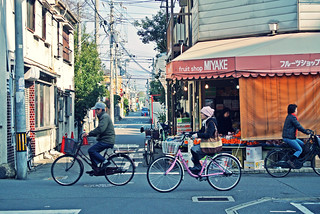Education in Japan (Natalie Collor)
The Assistant Dean at Osaka University, Kobayashi Tadashi, recently spoke about the mistake found on the university’s entrance exam last year and acknowledged the university staff was at fault for roughly thirty students being rejected from the school because their correct answer was considered invalid. It took over eight months for the university to investigate this matter and realize that an alternative solution was possible and completely correct. In addition to accepting all fault for this occurrence, the university is prepared to offer admittance to all the students rejected based on their answer to this problem on last year’s test. However, it may be too little too late for some students.
Since entrance exams are taken just months before the first day of university classes, students have very little time to decide their future after the results of the exams are released. If students do not pass the exam at their top choice university, most of them choose one of two options: to enter a prep school for a year and retake their desired school’s exam the next year, or to enter a different program at the same school or a completely different school. Therefore, the students who have retroactively been given admission to Osaka University may already be nearing the end of their first year at a different school and find it difficult to transfer to Osaka University. Others may have already spent an additional year’s worth of money and energy preparing to re-take the exam in a few weeks.
Each student will likely have to make a decision very soon, because the university only has a specific number of seats available in each year of admission. Dean Kobayashi also spoke on how this unexpected situation created a bit of chaos in calculating the size of this year’s incoming class.
This is not the first time a university entrance exam was not graded accurately and the results mistakenly rejected a large number of students. The man responsible for bringing light to an alternative answer on the Osaka University entrance exam, Yoshida Hiroyuki, added his two cents on the issue. He said that while human errors are impossible to avoid completely on man-made tests like university entrance exams, he wished the university would have begun an investigation much sooner to resolve the error. Perhaps then the university admissions staff would not be scrambling down to the wire to figure out the exact number of students to grant admission to this year.
- The Japan Times「大学の入学試験で失敗した学年」,2018/-1/14. https://www.japantimes.co.jp/opinion/2018/01/14/editorials/failing-grade-universities-entrance-exams/#.WmERB5OpkWo
- 産経 WEST「阪大、入試で謝罪「一年間、受験生の人生の計画を狂わせた」」,2018.01.06. http://www.sankei.com/west/news/180106/wst1801060052-n1.html
- 朝日新聞 DIGITAL「予備校講師「昨夏に指摘したのに…」阪大入試ミス」,2018/01/07. https://www.asahi.com/articles/ASL167S48L16PTIL011.html?iref=pc_extlink



